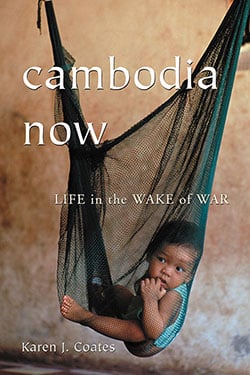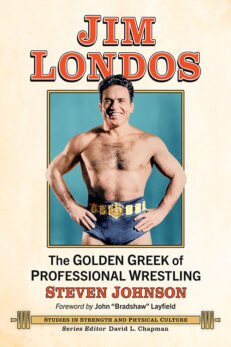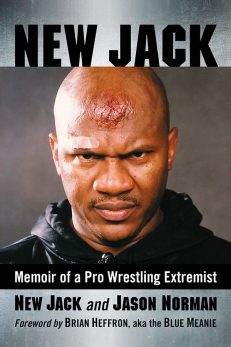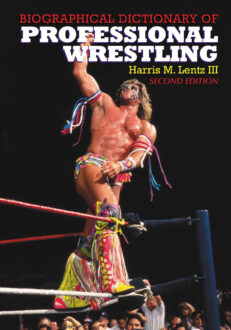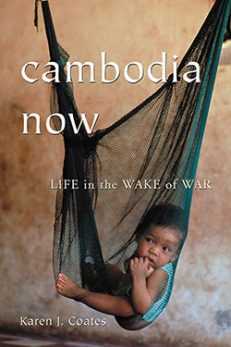Subtotal: $39.95
Cambodia Now
Life in the Wake of War
Original price was: $39.95.$31.99Current price is: $31.99.
In stock
About the Book
Cambodia has never recovered from its Khmer Rouge past. The genocidal regime of 1975–1979 and the following two decades of civil war ripped the country apart. This work examines Cambodia in the aftermath, focusing on Khmer people of all walks of life and examining through their eyes key facets of Cambodian society, including the ancient Angkor legacy, relations with neighboring countries (particularly the strained ones with the Vietnamese), emerging democracy, psychology, violence, health, family, poverty, the environment, and the nation’s future.
Along with print sources, research is drawn from hundreds of interviews with Cambodians, including farmers, royalty, beggars, teachers, monks, orphanage heads, politicians, and non-native experts on Cambodia. Dozens of exquisite photographs of Cambodian people and places illustrate the work, which concludes with a glossary of Cambodian words, people, places and names, and an appendix of organizations providing aid to Cambodia.
About the Author(s)
Bibliographic Details
Karen J. Coates
Format: softcover (7 x 10)
Pages: 392
Bibliographic Info: photos, glossary, maps, notes, chronology, appendix, bibliography, index
Copyright Date: 2005
pISBN: 978-0-7864-2051-3
eISBN: 978-0-7864-5402-0
Imprint: McFarland
Table of Contents
Acknowledgments vii
Preface 1
Introduction 5
Map of Cambodia 12
PART I: RECONCILING THE PAST
1. War Remnants: Mines and Desperation 15
2. Leaving Cambodia: Passing the Test 34
3. Genocide: Ghosts on the Porch 41
4. Angkor: An Empire in Ruins 50
Interlude: Siem Reap to Phnom Penh 67
5. Neighbors and Borders: Enemies Through Time 70
Interlude: The Admiral’s House 88
6. Kampuchea Krom: The Land Next Door 90
7. Anlong Veng: Beyond the Khmer Rouge 97
Interlude: Bond and Than 106
PART II: LIVING NOW
8. Democracy: Rice and Rights 111
Interlude: Sam and Vic 127
9. Violence and Crime: Blood in the Street 130
Interlude: A Runner’s Course 138
10. Psychology: After the Tragedy 142
11. The Wanderers: A People Uprooted 152
12. Women: The Lesser Sex 165
13. Children: Born Against Odds 175
14. Health: Living Against Odds 199
Interlude: Dog Bite 214
15. Pollution: Sewage and Waste 218
16. Environment: Threats in the Wild 233
17. The Fringe: People on the Edge 253
PART III: LOOKING AHEAD
18. The Crossroads: Tugged in Two Directions 279
19. Development: Building on Quicksand 291
Interlude: Cops and Dogs 299
20. Heroes: Doing It Their Way 302
21. Prospects: No Easy Peace 325
Afterword 333
Glossary 337
People, Places and Names 339
Organizations 341
Cambodian Time Line 343
Notes 347
Selected Bibliography 365
Index 377
Book Reviews & Awards
Winner, August Derleth Award—Council for Wisconsin Writers; Editors’ Pick—Foreign Policy Association
“compelling”—Pacific Affairs Journal; “in this moving book, illustrated with Redfern’s photos, Coates depicts the spunk, the verve, and the color of a resilient and optimistic people”—Wildlife Conservation Magazine; “an impressive book…one of a few publications to focus on life in Cambodia today”—The Montanan; “I loved the book, I could hardly put it down…a must read…strongly recommended”—Cambodia Tales; “relentlessly compelling essays…haunting photos…combines human stories and journalistic thoroughness…examines Cambodia through a variety of prisms”—The Register-Guard; (Eugene, Oregon); “Coates and Redfern found a country that had been torn apart by war and remained violent. Through the people they met along the way, and in some cases, helped toward a more rewarding life, they paint a picture of Cambodia that isn’t being told anywhere else. Most news agencies have all but forgotten the country…anyone with even a mild interest in Southeast Asia won’t be disappointed. This book is for anyone who wants to read of a culture and a history so foreign to our own. It’s also a book for anyone who likes to read about fascinating stories of challenge, and the strength of the human spirit.”—The News-Review; (Roseburg, Oregon;) “a portrait of the country that shows ‘the ravines of life between Cambodia’s bursts of news’ through the stories of individuals…shed[s] light on the experiences and impact of the Khmer Rouge genocide, the historical legacy of Angkor Wat, relations with neighboring countries, the psychological effects of war, current politics, internally displaced peoples, the status of women and children, health and ecology, and future prospects”—Reference and Research Book News.

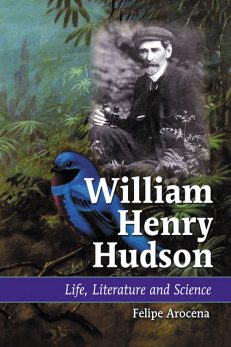 William Henry Hudson
William Henry Hudson 
